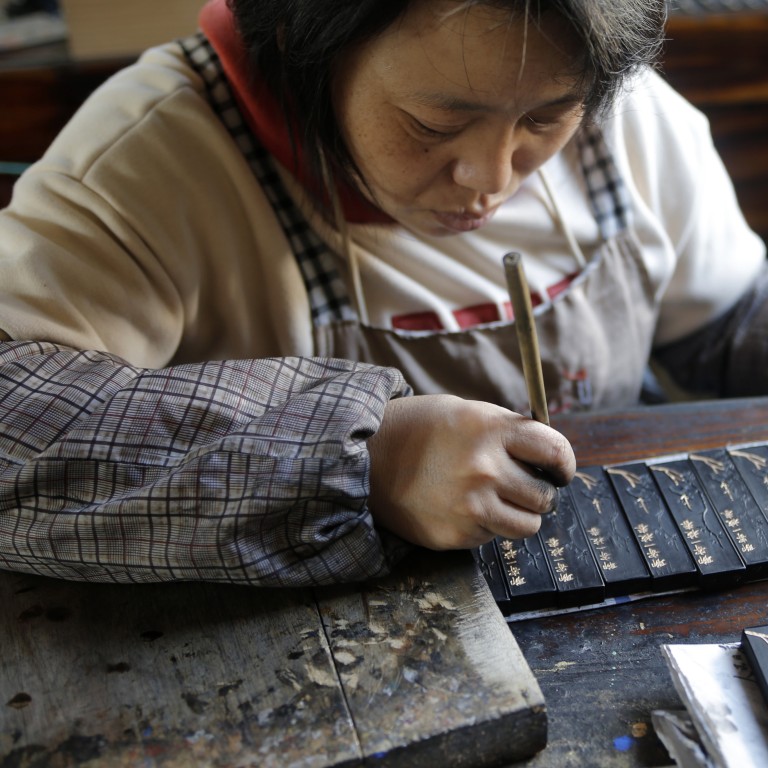
Explainer | China’s economic recovery momentum ‘takes a step back’: 4 takeaways from October’s manufacturing, services activity
- Both China’s official manufacturing purchasing managers’ index (PMI) and the Caixin/S&P Global manufacturing PMI fell into contraction in October
- China’s official non-manufacturing PMI also fell, but the Caixin/S&P Global services PMI rose slightly from a nine-month low in September
1. ‘A renewed deterioration in factory activity’
Within the official manufacturing PMI, the new-orders subindex dropped to 49.5, from 50.5 a month earlier, while the new-export-orders subindex fell to 46.8 from 47.8 in September.
“Manufacturing activity fell back into contractionary territory after a temporary reprieve last month. For one, global demand for exports remained weak as the gauge for new export orders fell deeper into contraction again,” said Erin Xin and Jing Liu, Greater China economists at HSBC.
“Exports weakness is likely to continue to drag on China’s external sector for some time as other central banks keep restrictive monetary policy in place.”
‘Bumpy road’ ahead for China’s economy as manufacturing takes surprise dip
“The Caixin manufacturing PMI declined under 50 in October, mirroring the change in the official manufacturing index. Taken together, the average of the two is consistent with a renewed deterioration in factory activity last month,” said Julian Evans-Pritchard and Sheana Yue, China economists at Capital Economics.
2. ‘A further loss of momentum’
China’s official non-manufacturing PMI stood at 50.6 in October, compared with 51.7 in September, and the main drag stemmed from weak capital market services and real estate services, according to analysts.
Within the non-manufacturing PMI, the construction subindex, partly affected by the ongoing property crisis, stood at 53.5, down from 56.2 in September.
That is well below its 2019 average of 52.8, and consistent with a further loss of momentum in the sector last month
“According to the accompanying statement, most of the decline can be attributed to further weakness in the real estate and capital market services sectors,” added Evans-Pritchard and Yue at Capital Economics.
“Taken together, the average of the two services PMIs fell to a 10-month low of 50.3. That is well below its 2019 average of 52.8, and consistent with a further loss of momentum in the sector last month,” noted Evans-Pritchard and Yue.
3. ‘Weak across the board’
The official composite PMI, which includes both manufacturing and services, fell to 50.7, down from 52 in September.
Meanwhile, Caixin/S&P’s composite PMI declined to 50 from 50.9 in September, marking the lowest reading since December 2022.
China’s services activity picks up despite soft sales, subdued employment
“The PMI surveys were unexpectedly weak across the board, with the composite measure falling to its lowest in eight years outside of Covid lockdowns,” added Evans-Pritchard and Yue at Capital Economics.
4. More to be done to avoid backslide?
China is set to release both trade and inflation data for October next week, with retail sales, industrial production and investment data to follow in mid-November.
“If the hard data released later this month are similarly weak, more will need to be done to ensure the recovery doesn’t slide backwards,” added Evans-Pritchard and Yue at Capital Economics.
The PMI readings show that the recovery still faces pressure
“The PMI readings show that the recovery still faces pressure, which has also been reflected in the labour market as the gauges for employment remained in contraction in October,” they added.
“This will likely prompt policymakers to maintain an easing bias to support growth through both monetary and fiscal policy.”

.JPG?itok=J8tgfPmW&v=1659948715)